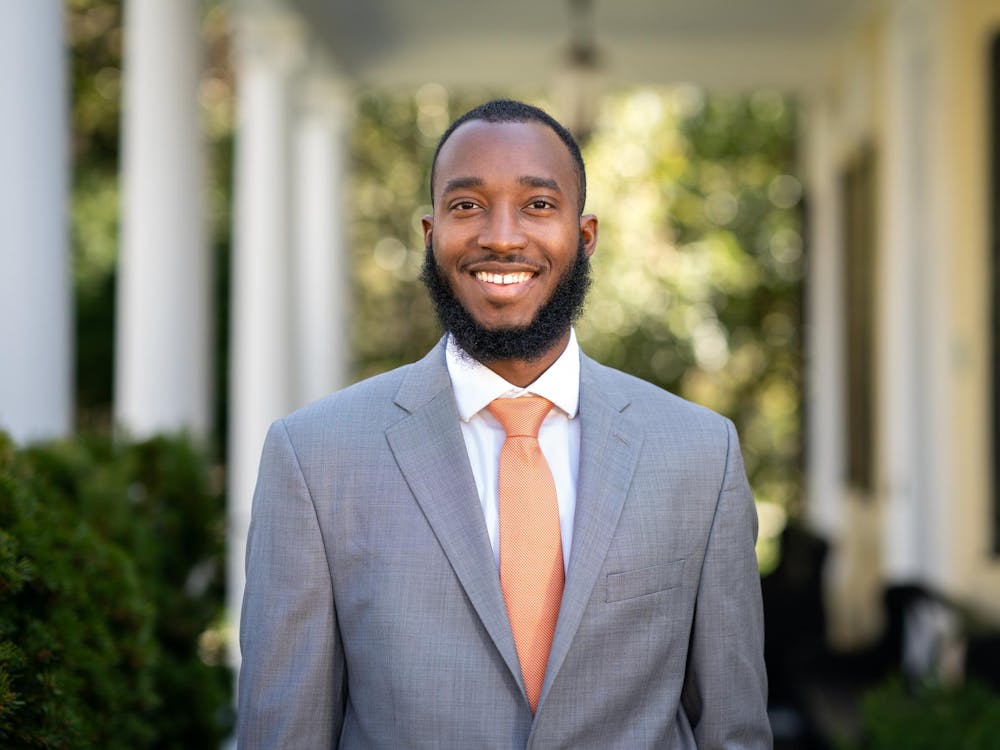While most of their classmates and colleagues were enjoying Fall Break last week, a group of Princeton students and researchers stayed up until 4 a.m. Friday night perfecting its presentation on a new method to kill breast cancer cells.
Led by electrical engineering professor Ron Weiss and Cil Purnick, a postdoctoral associate in the electrical engineering department, the team — working with other students not associated with the University — labored throughout the summer to prepare for a worldwide bioengineering competition held last Saturday afternoon at MIT.
The four-year-old International Genetically Engineered Machine Competition (iGEM), which evolved from a contest among MIT students, has expanded to include 56 teams comprised of 700 students from around the world. In addition to the Weiss-Purnick team's project on breast cancer, other teams this year have worked on projects including a new treatment for HIV and diabetes, bacteria specially engineered to create hemoglobin and self-flavoring yogurt.
The conference is an ongoing project based on the idea that "if you create modular pieces of genes and receptors, and you create them in such a way that people can easily use them, then biology can become more accessible," Purnick said.
The main goal, she added, is to test participants' ability to "take parts, put them together and get cells to do something they don't normally do."
The Weiss-Pernick team's project proposed using a lentivirus — a retrovirus that can integrate with the DNA of both dividing and non-dividing cells — to compute various levels of markers in cells in order to determine their healthy states. A normal breast cell, for example, contains one GATA3 gene, but in cancerous breast cells, the gene is expressed 32 times.
The group proposed using a small interfering RNA (siRNA) that — in the presence of large quantities of the GATA3 gene — would be diluted and therefore unable to suppress the expression of the BAX factor, a sequence that controls the self-destruction of the cell.
In a normal cell, the siRNA would be in amounts concentrated enough to suppress the BAX factor.
By applying this concept to several markers at once, the virus can decide whether a cell is healthy or not and then proceed to destroy the cancerous cells. With this method, physicians could potentially improve on present forms of chemotherapy, which attack cells regardless of whether they are healthy or cancerous.
"The uniqueness is in our ability to integrate multiple signals and ... program a virus to [destroy the cell]," Weiss explained.
Unlike last year, when they were second runner-up for iGEM's grand prize, the Weiss-Purnick group did not receive any major awards this year. They did, however, receive a gold award for their significant contribution to iGEM.
Undergraduates in the group said they appreciated the knowledge they gained by attending the competition. "I had no research experience going into the summer, nor did I have much biology background beyond high school," team member Vichi Jagannathan '10 said in an email. "I think this was the case for the majority of the undergraduates who participated."

"The program was very much structured to teach both the underlying molecular biology principles and proper lab techniques and protocols," she added.
Neal Yuan '10 said he was encouraged by how fast he was able to learn the skills he needed in order to participate. "After a couple of weeks of learning by doing, we were proficient enough to actually begin conducting cutting edge bioengineering research," he said in an email. "Research doesn't really get much more hands-on than this." He added that he may incorporate the research into his independent work.
In order to join the Weiss-Purnick team, students from Princeton and other schools were encouraged to submit a one-page essay proposing ideas for a potential system design. Candidates from the University area then attended seminars in the spring designed to "get students on the same page," Purnick said.
Participants for the summer were then selected based on the quality of their ideas and their dedication to the program, as shown through their attendance at lectures.
"We want our summer students to be motivated and interested, because that's the way this research is being pushed forward," Purnick said. "[Undergrads] are the future of this field. It's very novel research and is incredibly valuable for them and the field as a whole."







